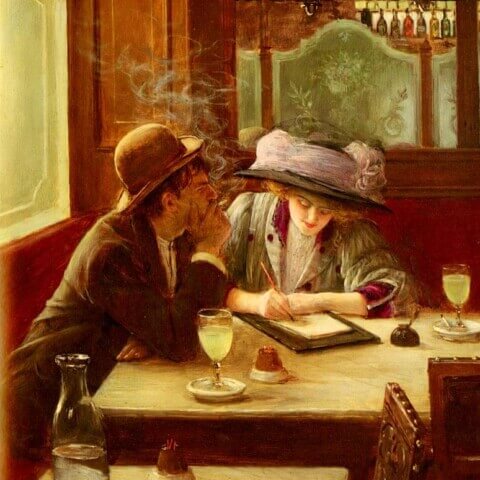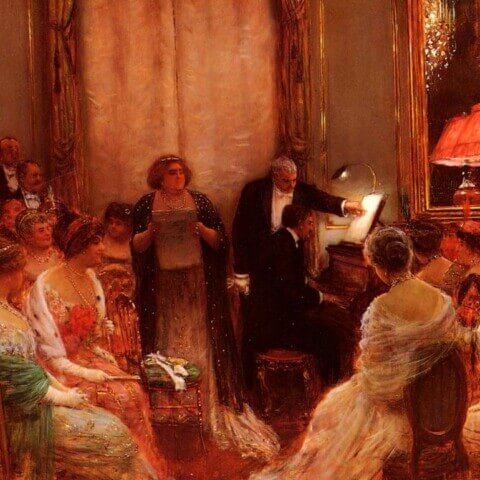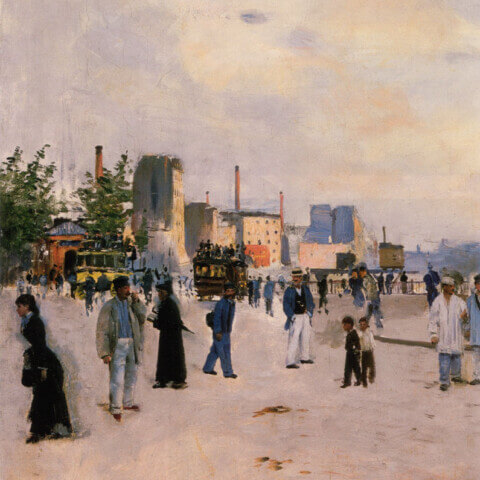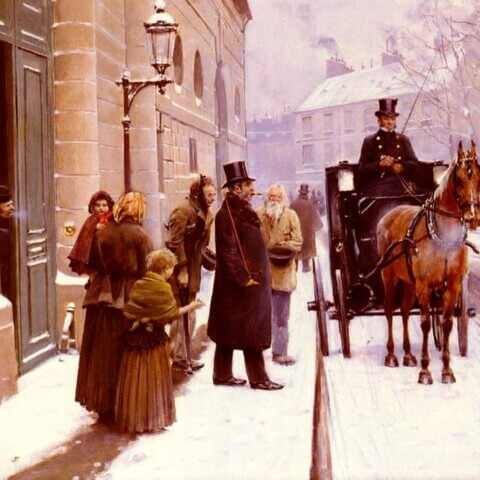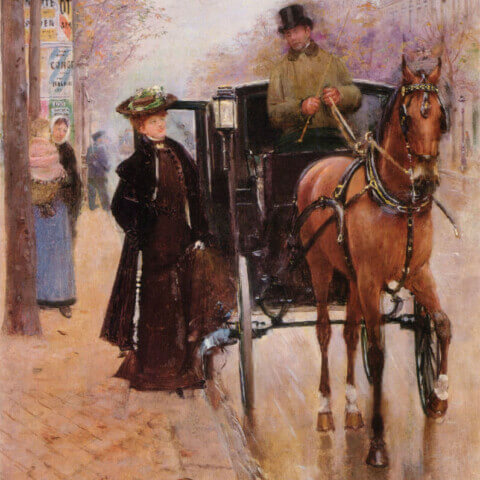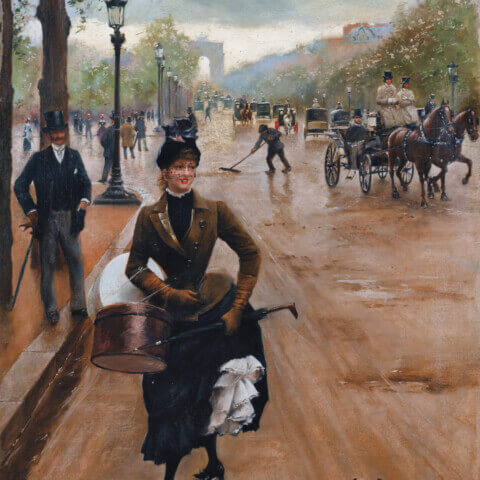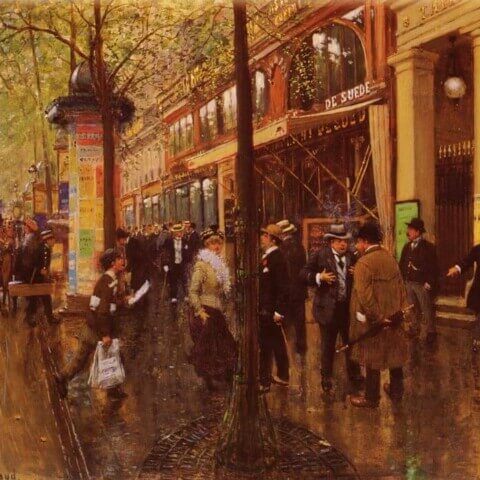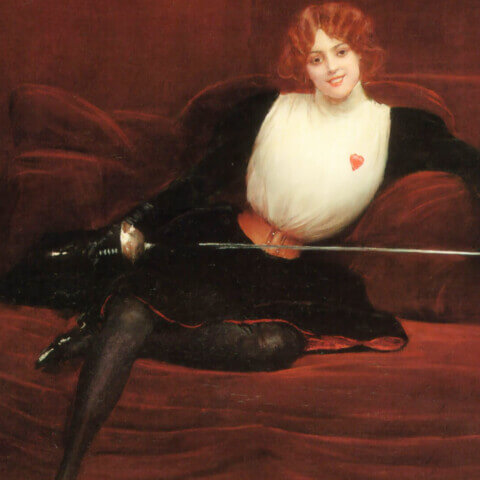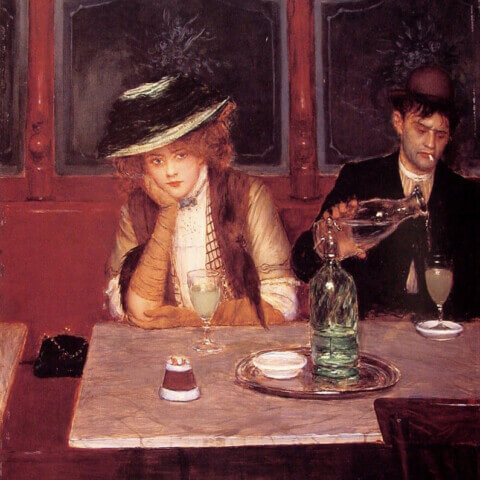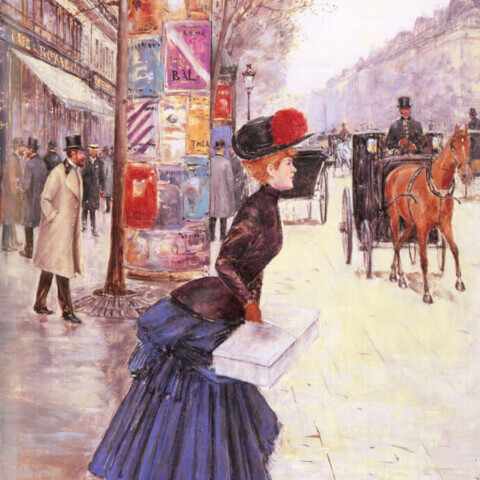Jean Beraud
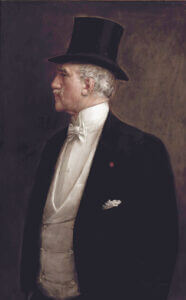
Jean Béraud was a prominent French painter born on January 12, 1849, in Saint Petersburg, Russia. He became renowned for his remarkable talent in capturing the vibrant scenes and daily life of late 19th-century Paris. Béraud’s keen observation, attention to detail, and ability to depict the changing face of the city made him one of the leading figures in the art world of his time.
Born to a French family, Béraud’s father worked as a sculptor, and his mother was a Russian pianist. At the age of two, Jean Béraud and his family returned to Paris, where he would spend the majority of his life. The city would become a significant source of inspiration for his artistic career.
Béraud’s passion for art developed at an early age, and he enrolled at the Lycée Bonaparte, where he received a solid academic education. However, it was his deep-rooted fascination with the streets, cafes, and boulevards of Paris that ignited his artistic calling. Influenced by the works of artists such as Gustave Courbet and Edgar Degas, Béraud began to explore the world of painting.
In 1866, Jean Béraud entered the École des Beaux-Arts, one of the most prestigious art institutions in France. There, he studied under the guidance of renowned artists, including Léon Bonnat and Jean-Léon Gérôme. Béraud’s talent quickly became evident, and his unique style began to take shape.
After completing his formal education, Béraud exhibited his work at the Paris Salon for the first time in 1872. His paintings primarily depicted scenes from the bustling streets of Paris, showcasing its diverse inhabitants, from the bourgeoisie to the working class. Béraud’s exceptional ability to capture the essence of a moment and his attention to intricate details made his artworks highly sought after.
Throughout his career, Jean Béraud remained deeply committed to portraying the spirit of Parisian life. His paintings often featured crowded boulevards, lively cafes, and the bustling activity of the city’s various neighborhoods. Béraud’s meticulous brushwork and his use of light and shadow created a sense of realism, making his artworks come alive.
While Béraud was primarily associated with the realist movement, his works also demonstrated the influence of Impressionism. He adopted a looser brushstroke and a more vibrant palette, capturing the fleeting impressions of light and color. This fusion of styles allowed Béraud to create a unique visual language that bridged the gap between tradition and innovation.
Jean Béraud’s artistic career spanned several decades, and he enjoyed great success and recognition during his lifetime. His works were exhibited in prestigious galleries and museums across Europe and received critical acclaim. Béraud also became a member of the Legion of Honor, a highly esteemed recognition of his contributions to the arts.
Jean Béraud passed away on October 4, 1935, in Paris, leaving behind a rich legacy of paintings that continue to captivate art enthusiasts and historians. His masterful depictions of Parisian life provide a vivid and evocative glimpse into the bygone era of the late 19th century, immortalizing the city’s essence for generations to come. Today, Béraud’s artworks can be found in major collections around the world, reminding us of his enduring impact on the art world and his significant contribution to the visual documentation of Parisian history.

